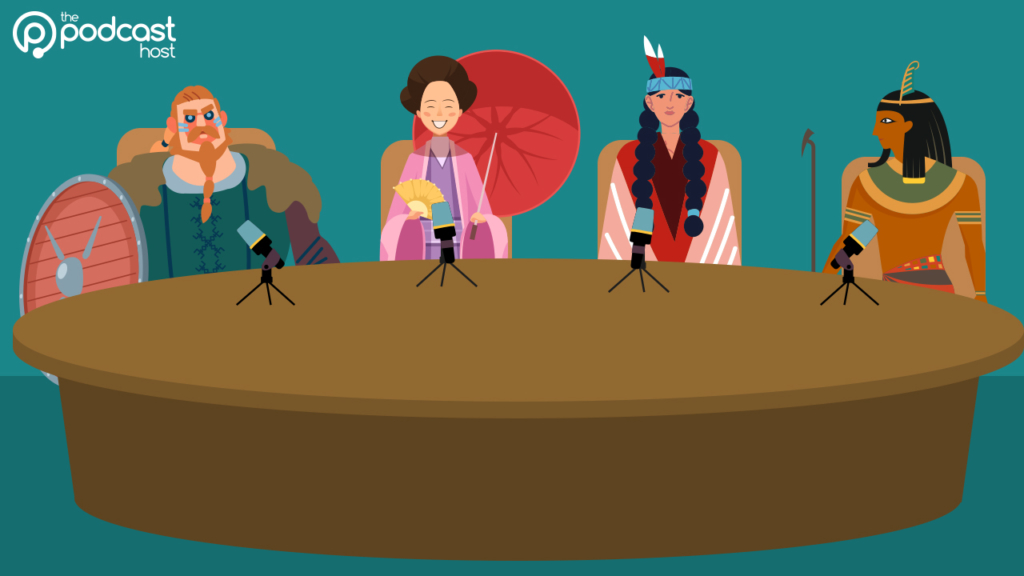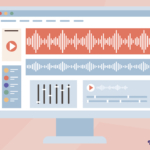Podcast with Dynamic Content to Make Your Audio More Relevant, Fresh, or Surprising
If you’ve listened to a lot of podcasts, you’ve probably heard dynamic audio insertion. Do you know when you’re listening to a podcast, and the audio suddenly shifts? Typically, you hear this in ads. Maybe there’s background music, the pacing and tone brighten, or the volume’s a little louder. Sometimes, the audio seems oddly specific to your listening experience. For example, if you’re listening to a UK-based podcast, but you’re in the US, you might hear an ad for American products or services. This method of adding an audio clip to a podcast, after publishing, works not only for ads, but also for podcasts with dynamic content. Dynamic content can make your episode more relevant and personal to individual listeners.
What’s Dynamic Audio Insertion?
When you heard a separately recorded piece of advertising in a podcast, chances are the producer didn’t record and edit it in themselves. Dynamic ads are “stitched in” to the podcast episode when the ad condition’s target is satisfied. This isn’t a bad thing. For example, Podbean uses dynamically inserted ads, so that the podcasters who use Podbean for hosting can monetize their shows.
Some audiences dislike dynamic ads because it distracts them from their listening experience. But, what if I told you that dynamic audio insertion isn’t just for ads? What if dynamic audio insertion could make podcasts more interesting? Let’s take a closer look at what’s possible when you podcast with dynamic content.
How Does Dynamic Audio Insertion Work?
I am not a programmer, nor do I claim to be one. Fortunately, Bryan Barletta of Sounds Profitable has created a detailed explanation of how dynamic audio insertion actually works. It includes a demonstration. Here’s my understanding of his article.
When you upload your episode to a media host, you, the producer, can mark where you want the extra audio clip. As Barletta says, this mark is precise “down to the millisecond.”
What Data Can Dynamic Content Use?
When someone in your audience presses “play” on the episode, the hosting platform receives four pieces of data. They are:
- the time of download (not to the minute, but what day of the week and part of the day)
- the podcast title
- user agent, or what type of app and device the person uses to listen
- IP address, which shows geographic location
In some cases, the media host can tell that the download is happening on a home or work wifi connection, or via cellular.
How Does Dynamic Content Use That Data?
The media host combines those four pieces of data and grabs an mp3 that matches. Then, the media host pops it into the spot that the producer marked at the time of upload.
I’m deliberately oversimplifying to get to the interesting part. Essentially, if two people listen to the same podcast episode, but at different times of day in different parts of the world, and the podcast’s media host uses dynamic ad insertion, the listeners will each hear a different ad.
People kind of take this for granted, because radio has always had a person queueing up ad recordings in a studio. Of course, they know if it’s morning or evening, and where the audience is.

Why Use Dynamic Content?
Sometimes, podcasters need to fix or highlight a point in their episode, after it’s published. Rather than re-record the whole episode, if you podcast with dynamic content, you can add a short recording into the existing, published episode.
Recently, Marc Maron highlighted a podcast episode from 2011, in which he interviewed comedian Norm MacDonald. He mentioned the episode on Twitter, soon after MacDonald passed away. Adding dynamic content would have been an effective way to amend the episode, for his audience that doesn’t use Twitter, and show that the episode carries a different meaning for him now.
When we podcast with dynamic content, our show can stay evergreen, though context changes.
Some Examples of Podcasts with Dynamic Content
You’ve probably figured out the most obvious application of dynamic audio insertion. A news podcast can play custom greetings for the audience’s time, date, and location. This is great if I want to listen to The BBC Global News Podcast, but hear the weather for Philadelphia. With breaking news, this can be particularly relevant.
Creative Uses of Dynamic Content
Ted Talks Daily published a “mystery episode,” to experiment with dynamic content, using PRX’s Dovetail publishing platform. The ever-popular Welcome to Night Vale did something similar with their 133rd episode, where listeners were treated to one of three different endings.
Neutrinowatch, “a generative semi-fictional podcast,” is a particularly interesting case. There are seven episodes, with upload dates from June of 2020. But, each episode changes, daily. For example, in the episode, “Wendy, Watch The Stars,” an AI answers a crank email, always with the same question. She answers the question with similar intent, but a different approach, depending on when you download the episode. She muses on how “sometimes the beating of a butterfly’s wings or a finger hovering too long over a send button can have huge consequences.”
The experimental audio drama podcast makes you listen carefully for tiny details.

Editor’s Note
Martin Austwick of Neutrinowatch was kind enough to answer some questions about how his dynamic audio merges so seamlessly. He said, “We use Python to stitch together pre-recorded audio segments and some computer-generated speech, as well as adding sound design techniques like fades, mixing, and reverb (to put things into the same space together). A piece of code ensures that the programme for each episode runs once a day, and we use a host called Justcast where all we have to do is overwrite a file in Dropbox and that will update the audio file on the feed. Oh yeah, and we do dynamic transcripts too :)” I still think it’s magic.
More Creative Freedom
If you want to podcast with dynamic content, right now it depends on your media host. Some support dynamic audio insertion and others don’t.
Buzzsprout will let you add dynamic audio as a pre-roll or post-roll. You can also use Podbean or RedCircle to add dynamic content.
When we podcast with dynamic content, we can adapt easily. Mistakes or misinformation can be corrected easily. Stories can be embroidered for repeat listening and deeper understanding. We can have a podcast niche, but make it more relevant to each audience.
There are loads of ways to make a podcast more interesting and to engage with your audience. At Podcraft Academy, we have courses, downloadable resources, and Weekly Live Q&A sessions to help you with any aspect of podcasting that your heart desires. Plus, our all-in-one podcasting tool, Alitu, can help you record, edit, and publish, anywhere.

